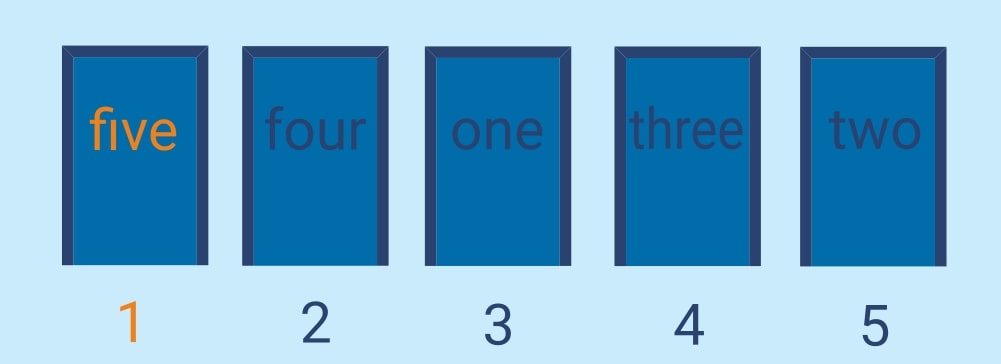
The Secret Room

Before going on this trip, you’ve gathered some information about the Lord Escher's quirks. One of them was a very unusual numbering of doors - he numbered them according to how the numbers go in the alphabetical order. For example, if there were five doors positioned from left to right, they were numbered as: five, four, one, three, two (instead of a completely logical numeration - 1, 2, 3, 4, 5). Thus, the very last door was actually the leftmost, not the very right one, as it might be assumed. Your task is to find the very last door.
As input your function will receive an integer - the total number of doors in the current room. You will need to sort the door numbers in the order in which these numbers, expressed in words, go in the alphabetical order. And then return the position number of the last door (the door with the highest number). The count starts from the 1st position (not from the 0th). The maximum number of doors is 1000. The numbers after 100 are written in the format like - 'one hundred twenty nine'.

Input: the door number.
Output: the 'right' door number.
Example:
secret_room(5) == 1, #five, four, one, three, two secret_room(3) == 2, #one, three, two secret_room(1000) == 551
How it is used: For the work with numbers in their alphabetical representation.
Precondition
:
2 <= amount of the doors <= 1000
CheckiO Extensions allow you to use local files to solve missions. More info in a blog post.
In order to install CheckiO client you'll need installed Python (version at least 3.8)
Install CheckiO Client first:
pip3 install checkio_client
Configure your tool
checkio --domain=py config --key=
Sync solutions into your local folder
checkio sync
(in beta testing) Launch local server so your browser can use it and sync solution between local file end extension on the fly. (doesn't work for safari)
checkio serv -d
Alternatevly, you can install Chrome extension or FF addon
checkio install-plugin
checkio install-plugin --ff
checkio install-plugin --chromium
Read more here about other functionality that the checkio client provides. Feel free to submit an issue in case of any difficulties.
Welcome to Pair Programming! Engage in real-time collaboration on coding projects by starting a session and sharing the provided unique URL with friends or colleagues. This feature is perfect for joint project development, debugging, or learning new skills together. Simply click 'Start Session' to begin your collaborative coding journey!
You are trying to join a pair programming session that has not started yet.
Please wait for the session creator to join.
It looks like the creator of the pair programming session closed the editor window.
It might happen accidentally, so that you can wait for reconnection.
